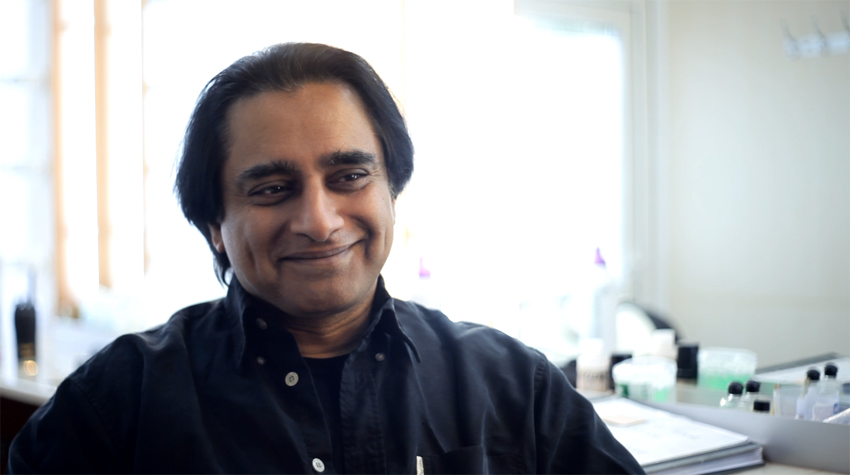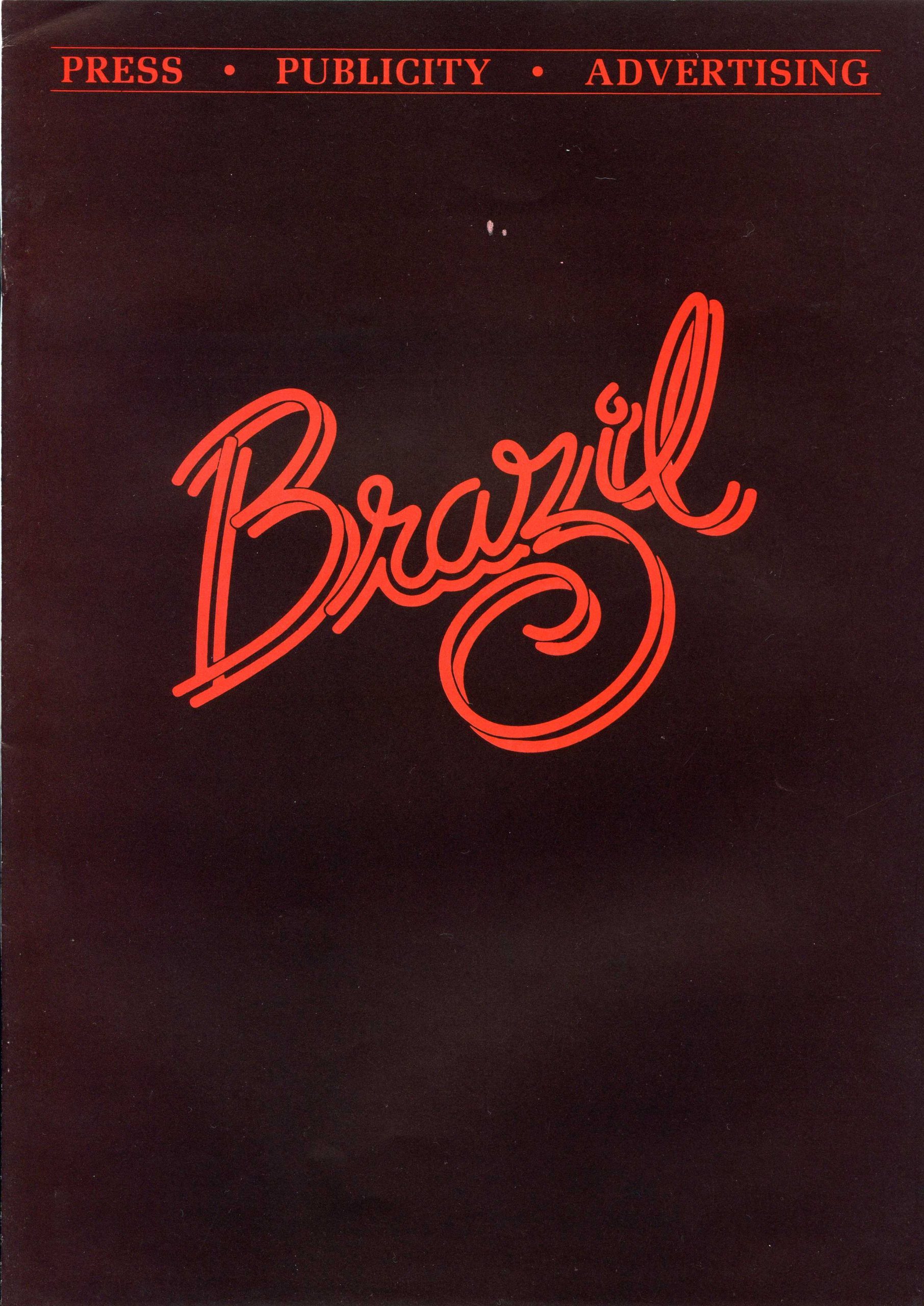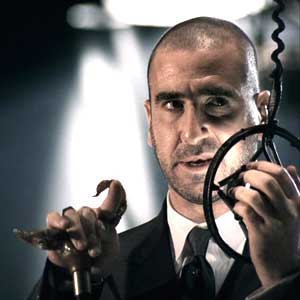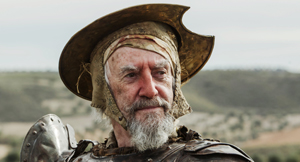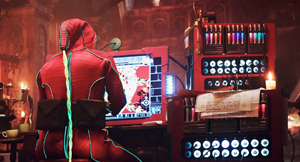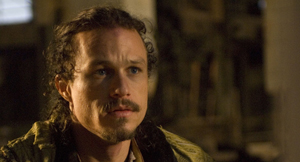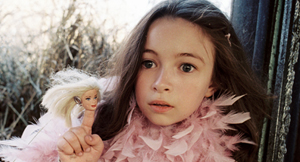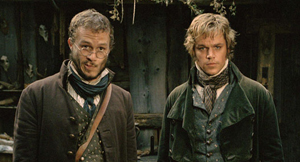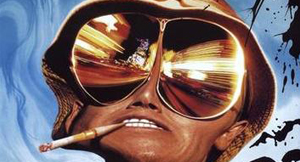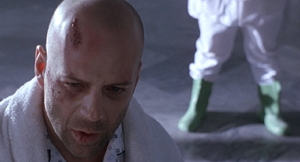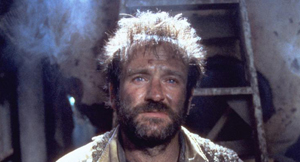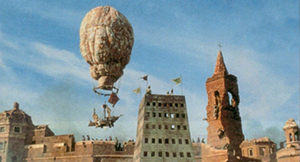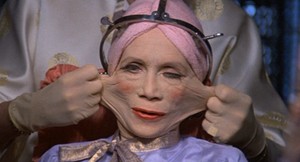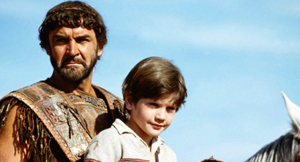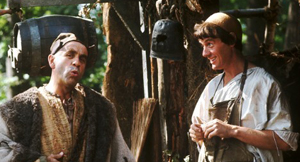Film director Terry Gilliam is back to work. This is a good thing. After all, it’s more than six years since his last film Fear and Loathing in Las Vegas started shooting. In recent months, he has been making a picture called The Brothers Grimm at the Barrandov Studios in Prague, with a sizeable budget and an enviable cast. Loosely based on the stories collected by the real Brothers Grimm of the nineteenth century, the film features Matt Damon, Heath Ledger, Jonathan Pryce, and Peter Stormare. I paid a visit to the Czech Republic set in September. I was to visit a couple of night shoots. “Bring warm clothes and be prepared”, I was warned, “for cold and wet weather”.
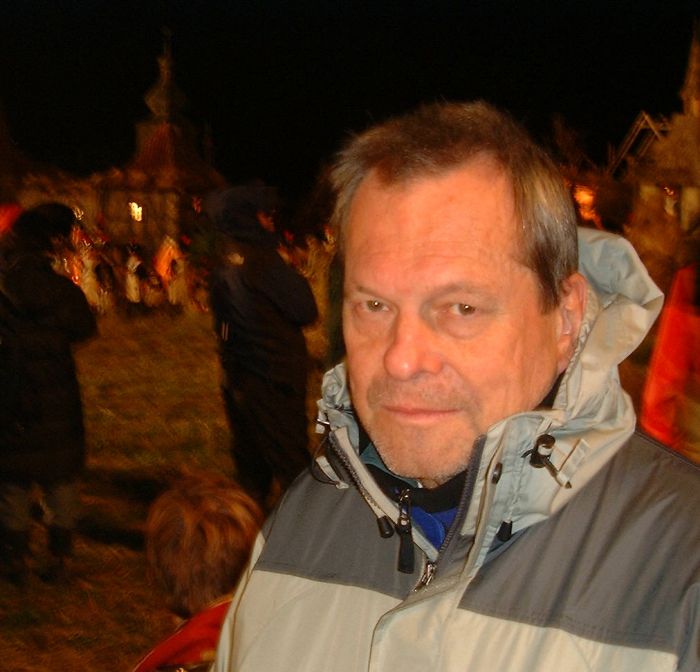
It’s 8pm, and I’m collected at my Prague hotel to be taken to Barrandov in Gilliam’s black Mercedes. Whisking straight past security and the studio buildings, we stop in a car park full of trailers. I am met by Terry’s daughter Amy who is working as his assistant, and I’m escorted to the set. I am instructed to remain very quiet during shooting, to have my phone turned off and never walk in front of the camera while it’s shooting. Sensible advice indeed. Equipped with a tight-fitting pair of Wellington boots borrowed from the director’s trailer, I head towards the studio backlot. It’s day 51 of the shoot.
We are on a hill overlooking the city of Prague, with its romantic attractions shimmering in the distance. As I approach the set, my eyes are drawn to a delightful constructed village to my left. It is extremely bright, since it is floodlit by enormous lights on my right, which are themselves just in front of a forest of very tall trees. I say a forest… it is in fact a thin stretch of imported trees giving a good impression of being a forest. In the middle is an acre or two of grassland where the members of the film crew are standing, setting up the first shot of the night. I’m told that not only has the village been built, but the trees and the grass have been brought in to create this external set.
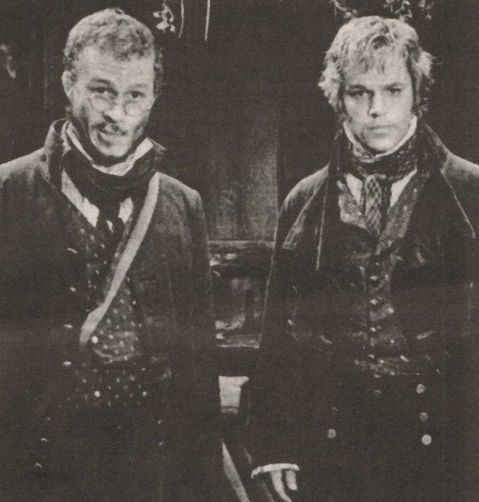
It’s cold, it’s dark, and it’s damp. I lurk behind the monitors where the acting talent have their seats, not that any of the stars are here at the moment. The food tent is pointed out to me, and it’s not long before I help myself to something to get me through the night. The first of many visits.
I see dozens of people working hard setting up the first shot of the evening. And in the middle of everything is the director of the project, Terry Gilliam. It’s not been an easy road for Gilliam over the last few years. After his last film was released in 1998, Gilliam threw himself into a project The Man Who Killed Don Quixote, which came a cropper after just a few days, due to bad weather and injury – the events of which were captured in the documentary film Lost in La Mancha. Then he spent a year on Good Omens, and a number of other potential projects which came to nothing. Not having been able to get any of his own movie projects off the ground, he’s taken on a studio project, a script by Ehren Kruger with Dimension Films providing funding. Gilliam fans will be cheered by the news that he and his co-writer Tony Grisoni have been given some freedom to rewrite the script, to shape the material in a more Gilliamesque fashion.
Gilliam finds a moment to have a quick chat with me. Among other things, he tells me that he’s particularly pleased with the performances his actors have given. There’s no sign of a documentary crew on this set, and fortunately there’s not the sense of doom and disaster that affected Quixote either. But the events are being recorded by Gilliam biographer Bob McCabe who is on set to write a book about the making of the film.
The key members of the filmmaking hierarchy (Assistant Directors, Continuity, Director of Photography) are linked with wireless communication devices, so no matter where I hang around, it’s quite difficult at any moment to work out exactly what is happening.
As I’ve said, Gilliam and crew are setting up the first shot of the day. There’s only one actor in this shot – a young girl wearing a red-hood, reflecting the Grimm roots of this script.
The camera has its back to the thin forest, and is facing the village. The camera is placed upon a crane which is in turn moving on a track. In the shot, the girl runs away from the camera towards the village in the background. She falls to the ground as the camera moves towards her. Her face and the village is lit up mid-shot suggesting she’s witnessing an explosion. There is an enormous and loud fan behind the camera to simulate a blast on the girl and which also blows straw onto her. Straw is dropped in front of the fan during each take.
Just after 9pm, we’re ready for take one. Takes two and three follow soon after. After four takes, Gilliam says he’s happy with it. But he then says, “Let’s do one more.” He has a better idea. After take eight, Gilliam describes it as “Wonderful”, but asks for another. Ten o’clock goes past, and we’re onto take ten. The director giggles “great”. In the next few takes, there are more problems as the girl keeps on making mistakes. In between each take the girl’s hair stylist recreates the girl’s hair. He finds that putting the curling tongs in front of the stars’ red-hot oil heater helps him get the right style each time.
By this time, Heath Ledger has appeared to find out what’s going on. He arrives on set with a pal wearing a rugby shirt and throwing a rugby ball. He chats for a bit with various members of the crew. Heath, who’s required to perform later, leaves the set throwing ball to his pal. They depart quickly but almost appearing in a vital take in modern attire. Jonathan Pryce also turns up and has a chat with Gilliam. Pryce just flew in today – he’s required tomorrow but popped down to the set to see how things were going.
By 11:30pm the crew has completed take twenty of the shot with the girl – this is to be the final take, the last few shots having been done with a wider angle.
Tonight I witness a continuous shoot throughout the night, which means no breaks for cast or crew. This presumably to minimise the number of days the cast and crew have to work nights. But the food tent remains open all night supplying drinks and snacks for all.
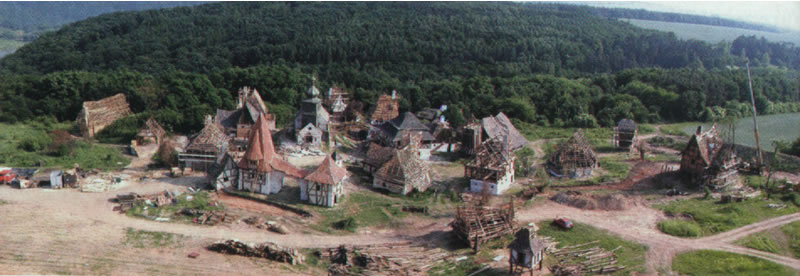
The Brothers Grimm is being shot on film. Within the camera is a further digital device which is used to feed the monitors around the set. The monitors are used by Gilliam and the DP to set-up each shot. And during shooting, not only are the moving images captured on film, but they are recorded digitally to provide an immediate record to ensure continuity. Working on set is an editor of the digital output, linked to the wireless communication system, who is able to replay any take to the monitors on demand. Gilliam and his DP Tom Sigel have monitors just near the camera, and there are further monitors situated for the seats reserved for the cast.
For the two days I was on set, Gilliam spent all of his time with the main unit for ten hours each day, seemingly taking no breaks. As on any movie shoot, the set-ups take significant time, as the elements in the shot are arranged and the camera is set-up. The assistant directors and DP have planned their work so they don’t need constant supervision from Gilliam, but the director talks to the cast, tests things out and makes himself available to answer questions. When the set-up is complete, Gilliam sits down behind the camera with his DP looking at the digital monitors, ensuring that each shot is perfectly composed. From there the DP can control the camera using levers. Where necessary, this is then compared with a previous shot recorded digitally – to ensure continuity.
When action is called, Gilliam carefully examines what is being captured by looking into the monitors. He watches the shot intently, acting as Quality Control. Then he communicates clearly what he likes or dislikes about the shot. If he’s happy, he giggles and utters positive comments. If he’s unhappy, Gilliam is not shy in telling his crew exactly what he thinks. On set, he’s clearly in charge.
It takes just over an hour to set up the second shot of the night. The crane, dolly track and platform from the previous shot are dismantled. The crew are preparing a shot at the main entrance of the village. As this takes place, Peter Stormare arrives on set in boots and spurs – without his character’s hairpiece, he’s bald with slight curly sideburns. His look is complete with shades and an anorak. Stormare is the most unpredictable individual on set, and the star who is most comfortable making conversation with whoever’s around him. “Are lentils called lentils because they are eaten in Lent?” he asks, the reason unclear. No-one is able to answer his question. He later spends time sampling and commenting on sweets brought in by English crew to help them through the uncomfortable night.
The second shot of day 51, ready for shooting half an hour after midnight, features an aging one-legged night watchman – on crutches – looking into the distance and asking, “Who’s there?” Not only is he on his crutches, but the poor chap carries a lantern which acts both as a prop and also as a source of light for the shot. While setting up the shot with his DP, Gilliam jokes “Make sure there’s plenty of light behind him. So they know we’ve gone to the trouble of getting a man with one leg.” Gilliam’s not satisfied with the first take, but just before the second take, the actor loses his grip on his crutches and falls backwards out of view. Probably on account of having one leg strapped up. For a few moments, nobody knows what’s happened. After a few guys go into the village entrance to find out where he’s fallen and how he is, he reappears unharmed for several more takes, until the director is happy.
The rest of the night is taken up with four shots from a scene featuring Will and Jake, the two Brothers Grimm (Damon and Ledger), Angelika (Lena Headey) and Cavaldi (Stormare). The shots are from the same scene, where the brothers and Angelika appear from a haunted wood whereupon they are confronted by Cavaldi. It’s indeed a tough night for the actors. Into the middle of the night and it’s getting colder and damper. Once the set-up is complete on each shot, all eyes are on the actors, and they have to perform complex scenes perfectly. So much pressure. Both of the lead actors give strong performances, the like of which I’ve seen from neither of them before. And Stormare is menacing.
Matt Damon’s character Will is trying to convince himself that there has to be a rational explanation for the horrors they’ve undoubtedly seen, in a similar way to Madeleine Stowe’s character Dr Railly in Twelve Monkeys. Will tries to control his brother Jake’s freaked-out behaviour as a parent would a wayward child.
Damon sits in front of me between shots, as his cut hand is being treated. He is concentrating and not letting anything from the outside world influence his thoughts. He appears dedicated and professional. With blond hair coming over his forehead he resembles a young Malcolm McDowell…
Heath Ledger – Jake – wears spectacles in the film. He goofs around a lot between takes. At the end of each take on shot four, he tries something amusing. He simulates a pair of scissors with two fingers in front of the camera at the end of some shots to suggest someone is to shout “Cut” imminently. Between takes he pulls the hood of his jacket completely over his head and face. Ledger also improvises – his words change from take to take. One or two of his improvs are quite inventive.
In between shots at about 4am, Bob McCabe offers to take me on a brief night-time tour of the village. Intricately constructed little buildings, designed by art director Guy Hendrix Dyas. The insides of the huts are just as detailed and fascinating as they are externally. Bob and I peer into one which is a bakery, with loaves of bread inside. There’s a small church in the village too. Some parts of the village set are not well lit in the early hours, which means that Bob and I struggle at times to safely make our way around the set. There’s lots of mud. And hidden cables. But we manage to manoeuvre our way around the set without damaging anything, cutting the power to anywhere on set and (far less importantly) injuring ourselves.
We come back to find Matt and Heath lying down on the damp ground next to each other looking up at a gun-toting Cavaldi. This shot is first taken from Cavaldi’s point of view and then from the brothers’. The final shot of the evening is then of Heath, who treads a narrow path between an absurd comedy performance, and portraying a character who appears to be really quite disturbed. He pulls it off.
The shoot finishes just after 5am. Bob and I find a lift back to our Prague hotels from the set. Collecting the call sheet for the next day’s shoot, I notice a requirement for many soldiers and horses, and details of some shots that are eventually going to need some rather ingenious CGI. And Jonathan Pryce will be performing. So plenty to be excited about. I arrive at my hotel to find the bar still open. After a quick Czech beer I notice that dawn is approaching. I try to get some sleep before subjecting myself to another day on the set of The Brothers Grimm.
I wake up rather late on 10 September, but still with plenty of time to explore Prague. I have an enjoyable walk around the Czech capital, including a visit to the city’s National Museum, featuring an alarming number of stuffed animals – most memorable being a dead giraffe and the corpse of a playful little pony.
Just after eight o’clock in the evening, I arrive on the Brothers Grimm set with Bob McCabe for a second night – day 52 of the shoot. It’s noticeably colder and windier tonight. I realise that last night’s shooting had been quite a small affair, with just the four stars, plus the young girl and the one-legged man. Tonight as Bob and I walk through the mud to the set, we see dozens of soldiers, many on horseback. According to the call sheet, there’s eight Artillery Foot Soldiers, sixteen Grenadier Foot Soldiers, twenty-four Infantry Foot Soldiers. Added to this are many villagers, including dozens of old crones. In fact, there are over thirty horses on the call sheet. Tents and military paraphernalia have been erected in front of the village. Several cannons have been placed there pointing away from the village. And as we walk towards the centre of the set, Peter Stormare overtakes us on foot, spitting and angrily muttering to himself.
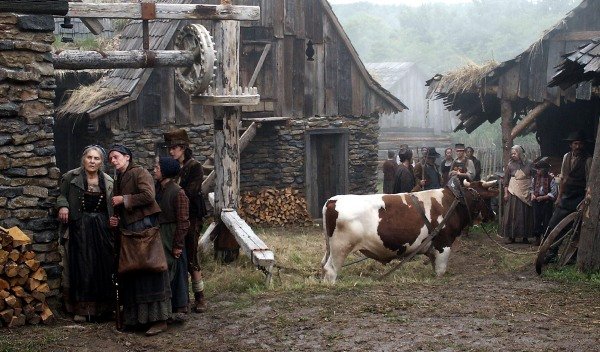
The first shot is being set up. Soldiers are being arranged in a line with their backs to the village and the tents, facing the camera. Director Terry Gilliam is busy with the camera at the edge of the forest.
During the set-up of this shot, Bob takes me on a tour of the Barrandov offices. All the sets are locked up so we can’t have a look, but I notice that there is an office for an prosthetics team and another for an animatronics team. Returning to the set for 9:00, I see Jonathan Pryce has turned up, uniformed as a senior French officer, looking noble and evil. He climbs onto his horse.
For the first shot of the night, I notice that there are two digital preview screens showing different moving images, fed by two separate cameras. One is a medium close up of Jonathan Pryce. The second camera is attached to a crane on a dolly, and is taking in a wider angle with horse and a background of the soldiers and village.
By 9:45, we are ready to shoot with the two cameras. In this shot, Pryce’s character, Delatombe, is humiliating the brothers Jake and Will who are offscreen. In fact, the actors Damon and Ledger are not needed for the night’s shoot at all. Delatombe orders a book of the Brothers’ tales to be burnt: “Burn it”. This reveals Delatombe to be an imagination-destroying villain, echoing previous characters within Gilliam’s work. This fact, together with a conversation between the brothers from last night’s shoot suggests that Gilliam has been able to mould the script to match his personal vision.
A bit of tinkering later, and at 10:25, take two is ready. One guy is holding Pryce’s horse at its front, and two are holding its behind, keeping it under control. Pryce hurls the book down with menace, and someone off screen catches the precious prop. As Delatombe addresses the brothers, a line of soldiers approach from behind. After five or six takes at 11:15, Gilliam is satisfied, and the crew moves to the second shot.
One outcome the dozens of extras is that there is a much larger food tent tonight, often teeming with soldiers and old crones in costume, with an increased amount of food options. I help myself to several helpings of gnocchi which help one get through the cold night. And it’s not just me that’s hungry – I see that the horses are grazing on the grass… turf that I understand was especially laid at Barrandov for this picture.
It’s now midnight, and for the last three quarters of an hour, the crew has been setting up the second shot of the night. Several soldier-extras are lined up near the camera. In this shot, the soldiers are to move towards the forest and set it on fire. The shot is from the brothers’ point of view – in the forest.
However, there’s a problem – the cameras are ready to roll yet there is no kindling beside the trees for the soldiers to alight. Suddenly a large number of crew members start to hack at the trees to make twigs and branches for the soldiers to set fire to. Which takes time.
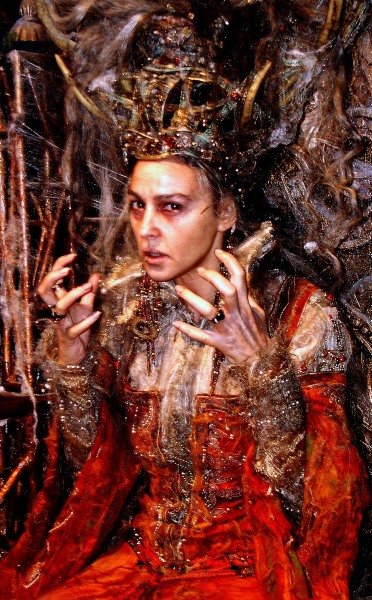
While more branches are being hacked, I look through some continuity stills, which look beautiful. Some from the village set during a daytime shoot. Several feature British actor Mackenzie Crook, who plays a pal of the Brothers Grimm who is involved in their capers to try and convince villagers of real demons and ghosts. Also in the stills I see that there appears to have been a scene in a torture chamber, further suggesting the genre of the film as comic horror.
A little later on and Gilliam is lying down on the ground right at the back of the set, looking through a long lens through some trees. He’s giggling, and seems to like what he sees.
After a rehearsal, this second shot shoots at 12:40. The forest burn scene is from the POV of inside the forest, looking out at the soldiers with the village in background. The soldiers approach and set the kindling alight. A Steadicam moves from side to side and catches the forest beginning to catch fire, as if from within a larger forest. Gilliam encourages to keep shooting, and he’s happy with the first take. The soldiers remain long enough for one of the soldiers’ helmets to catch fire, producing much mirth among the crew.
The crew then get on to set-up shot three, which takes an hour. This is a complex shot looking close to the village, involves dozens of extras and featuring three cameras. Gilliam and his DP spend time lining up the cameras with a joystick, moving the camera in and out, left and right. Also the actors and props within the shot are amended to optimise the composition, for example changing the direction of the cannon. Gilliam calls Kent Houston over to find out whether a digital effect can cover up a tree, which is harming the composition.
Pryce’s character yells a threatening remark in a French accent. A cannon fires. Cavaldi (ie Stormare) is behind him. Lots of soldiers, townsfolk and old crones feature in the shot. Then a cannon is fired. Huge orange lights are fired up behind the camera which brighten up the crowd’s faces, suggesting an explosion.
The one-legged night-watchman from yesterday is in the crowd of townsfolk. But here he has two legs. Gilliam realises that no-one has strapped up his “missing” leg tonight, but the director states that the audience won’t see in this shot that he’s actually got both his legs here. The problem with this shot appears to be the control of Pryce’s horse. It’s an extremely difficult job for anyone to do – acting as well as controlling his horse in the early hours of a cold Prague night. It gets colder, and Gilliam proudly reveals to me he’s remaining warm wearing six layers, counting them one at a time. He then jokes, “Have you been able to work out why we need so many people on set ‘cos I’ve never been able to work that one out…”
After the six takes have been completed across the three simultaneous cameras, a couple of other shots are done. One of these is a closer one of the townsfolk and old crones looking at an explosion caused by the cannon, Gilliam complains that the crowd didn’t appear to be looking at anything – they’re all looking in different directions. Gilliam asks for the crowd to look in the same direction. The Czech extras were all told to focus on a single point. During the next take, the crowd does as it is told and all looks at the source of the orange flash that brightens their faces. But an old bearded man in the middle of the crowd reveals his finger and starts pointing at it. To which Gilliam shouts, “Who’s that asshole pointing his finger like some Old Testament prophet?”
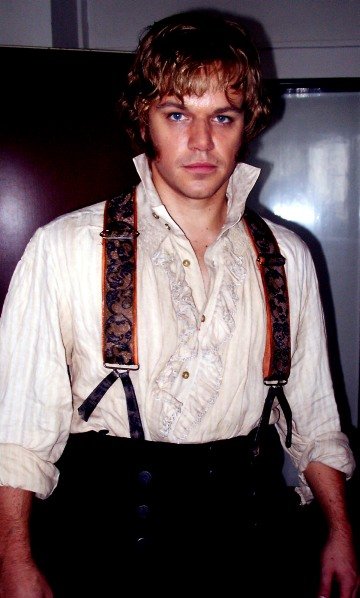
By 4:40, the multi shots of the cannon scene are complete, but there’s still time to squeeze in another shot – a Steadicam reaction of some soldiers to a fiery fox. This is done with a single Steadicam. There are two six-fingered gas-fed flames off-screen, lighting up some soldiers. Here, we are shooting the reaction to the flames (a fiery fox presumably).
At 5:30 in the morning, the day is at an end. I go up to thank Gilliam for allowing me to lurk around on set. Weary crew members escape to their beds. And I escape back to my hotel where I order an alarm call in 90 minutes time…
I’ve seen a great deal in the last two days to make me look forward to seeing this project when it’s complete in November 2004. What I have seen looks beautiful, the actors are tremendous in their roles, and the fragments of the script I have heard suggests that the story fits with Gilliam’s vision.
The challenge for the director is to make a Terry Gilliam picture within the constraints of a studio project. On set for just two days I’m unable to conclude to what extent it will be an idiosyncratic Terry Gilliam film. We’ll only be able to tell when the film is complete. But the signs are good and it definitely promises to be a fascinating movie.


